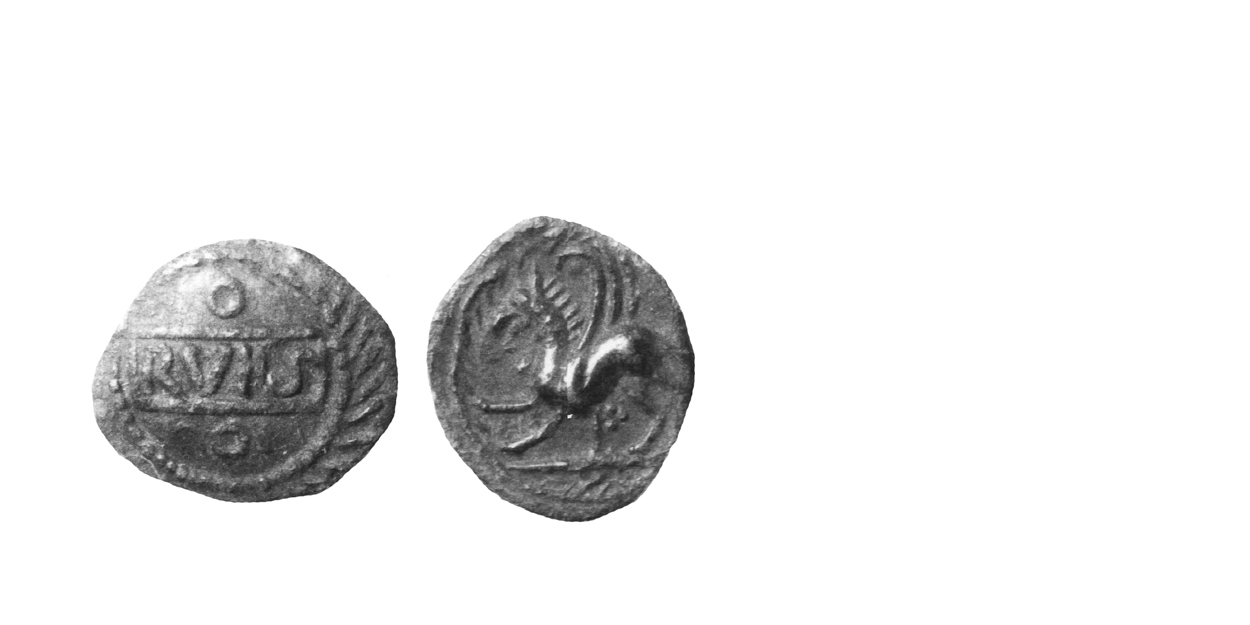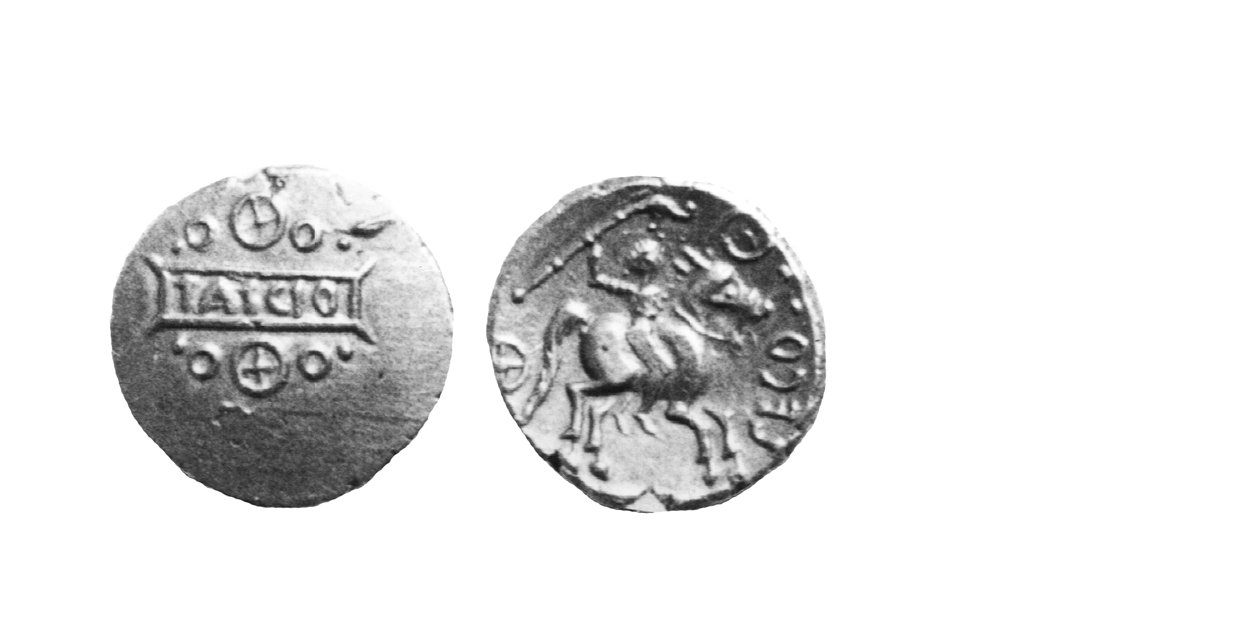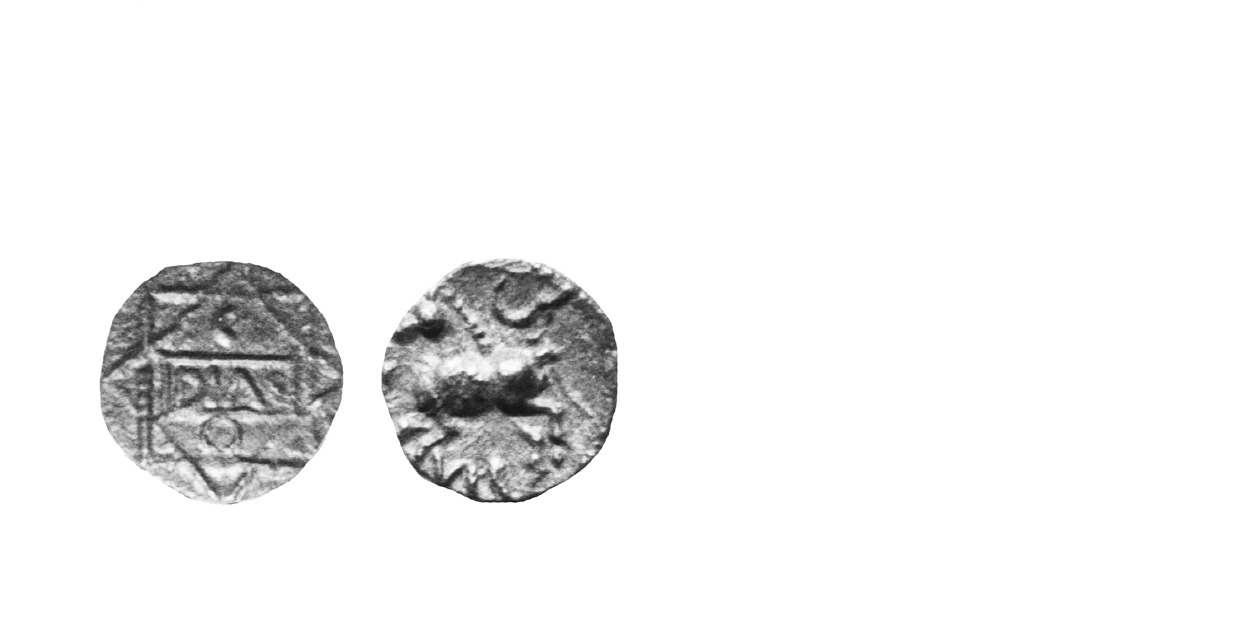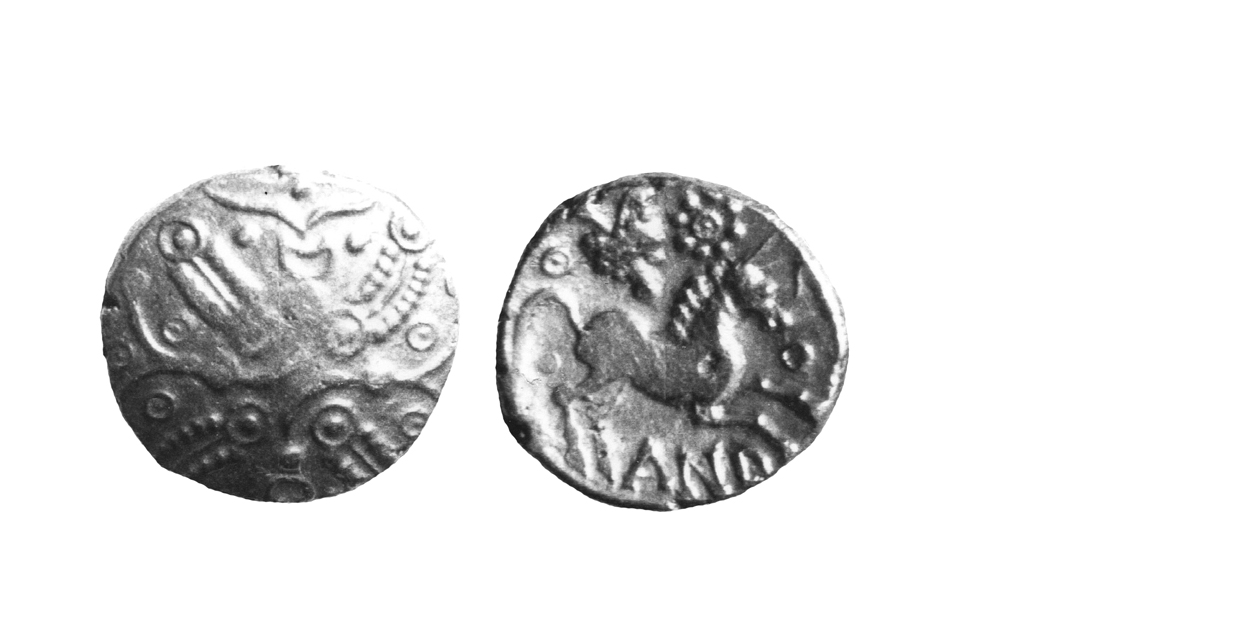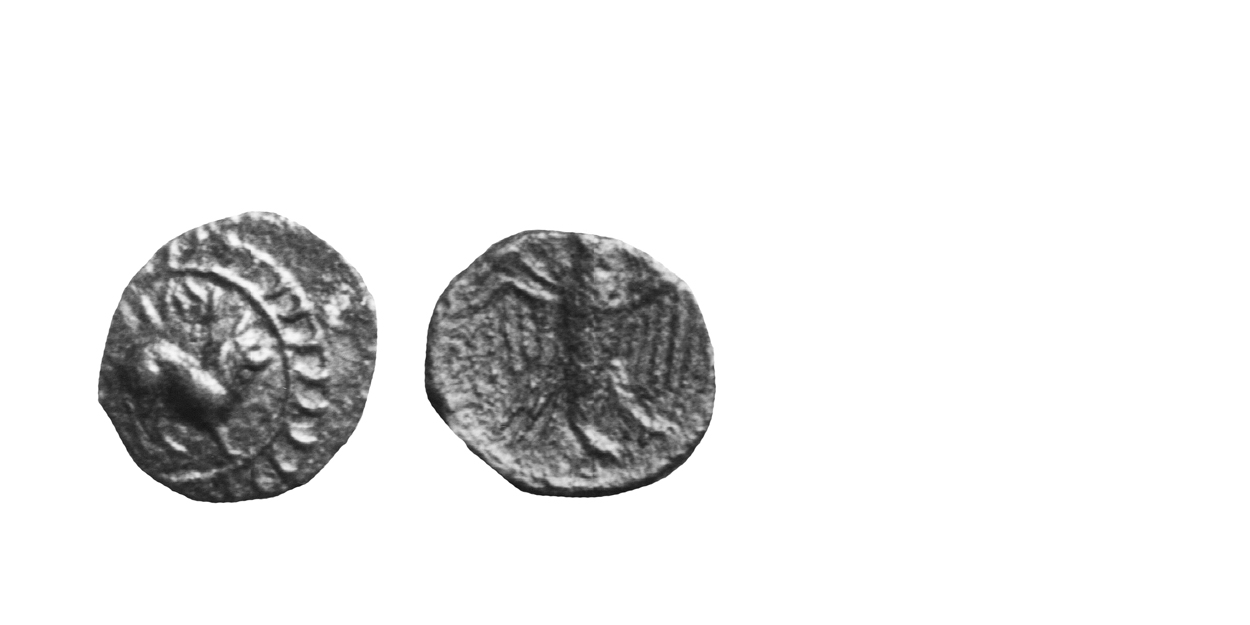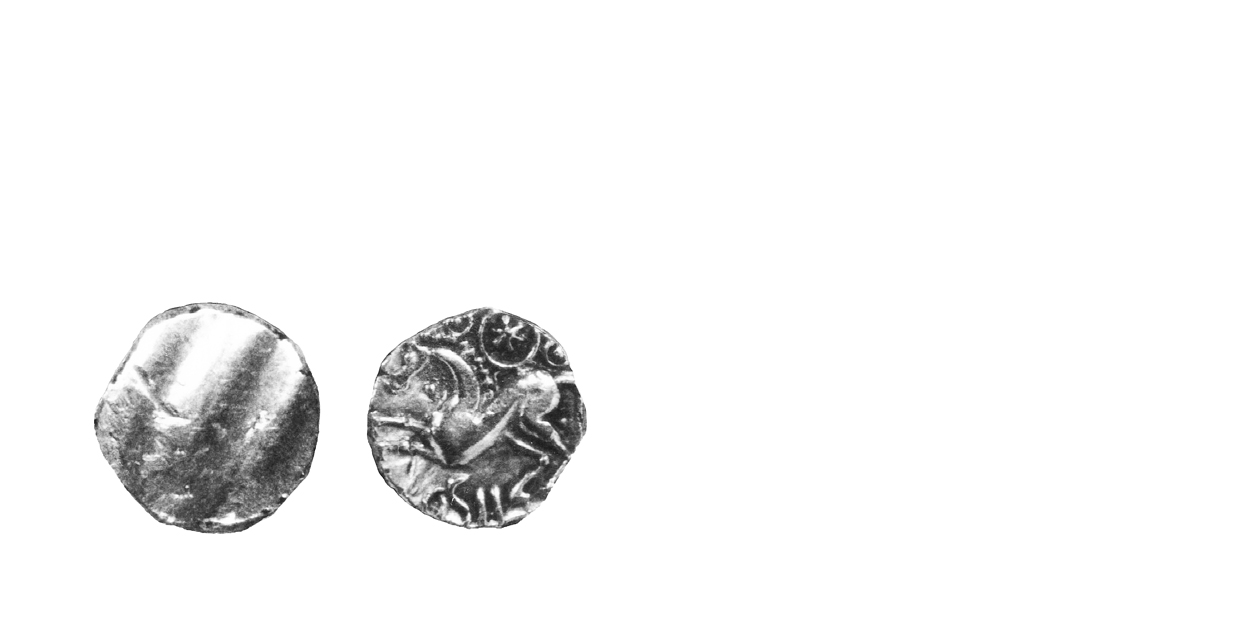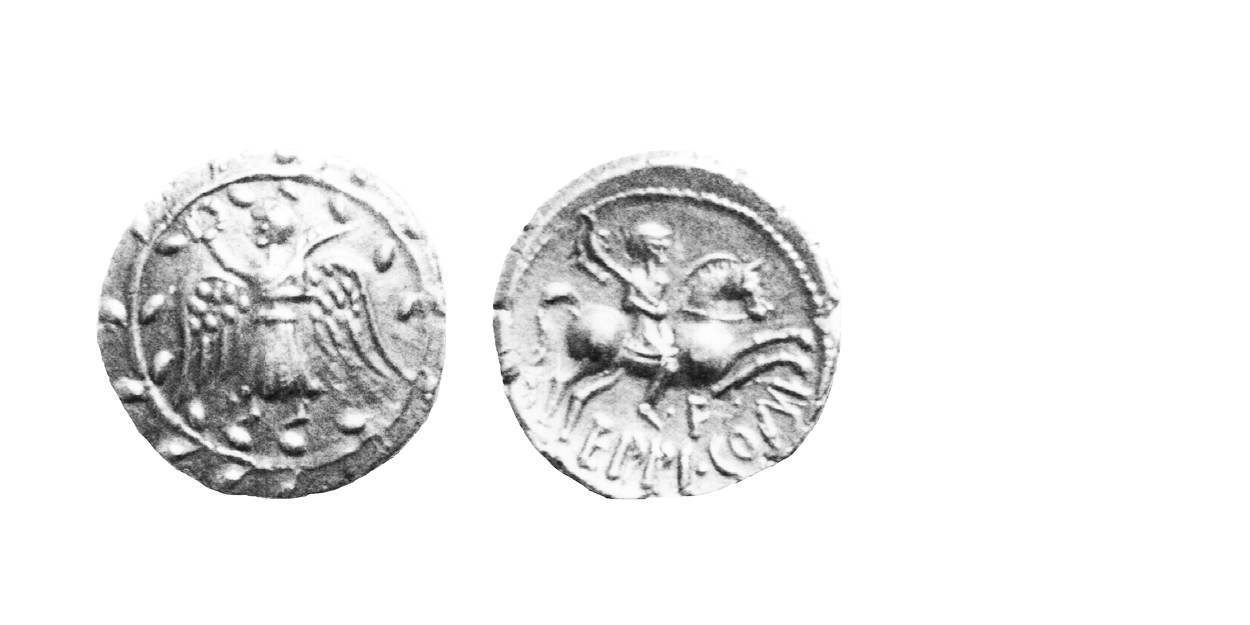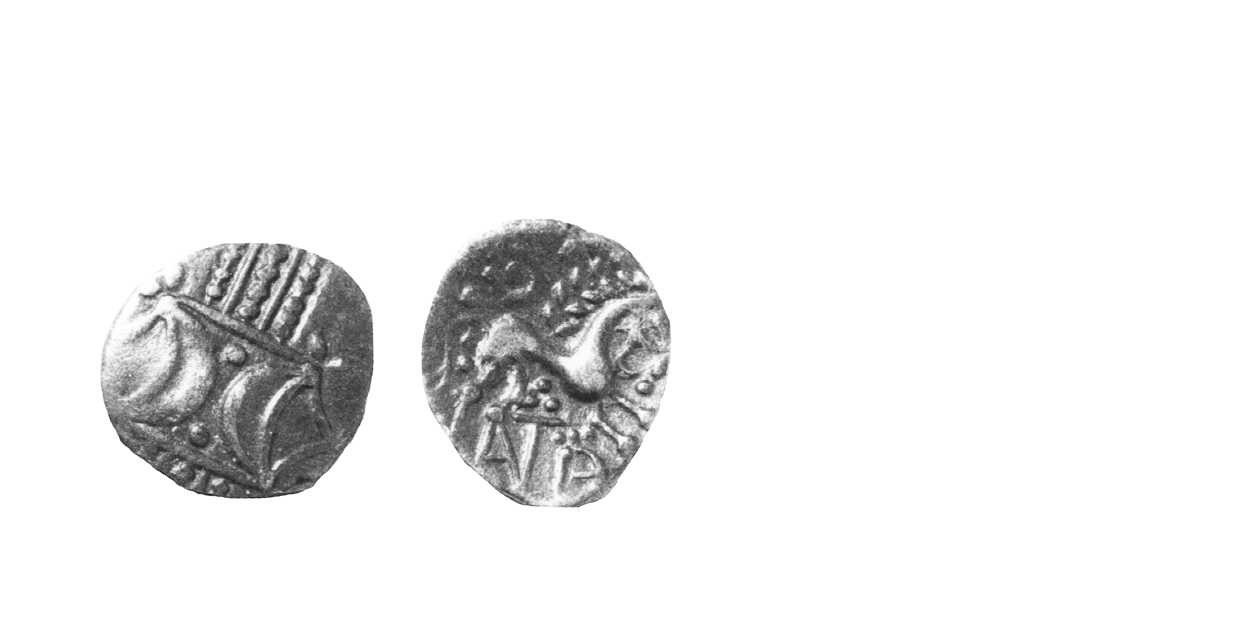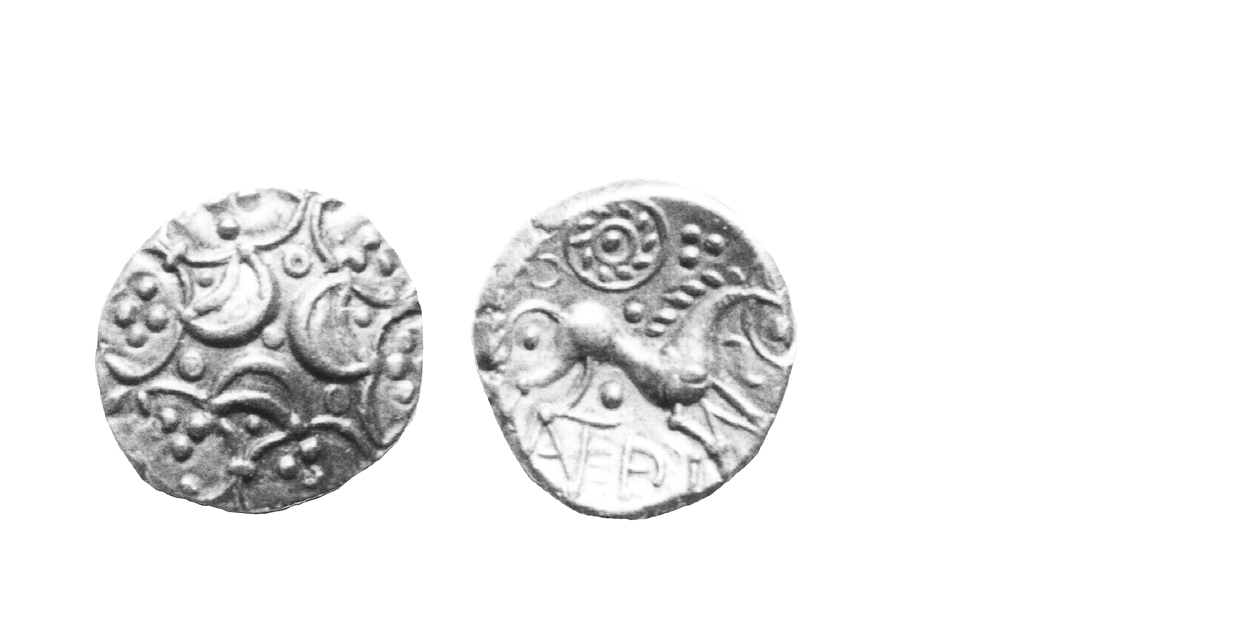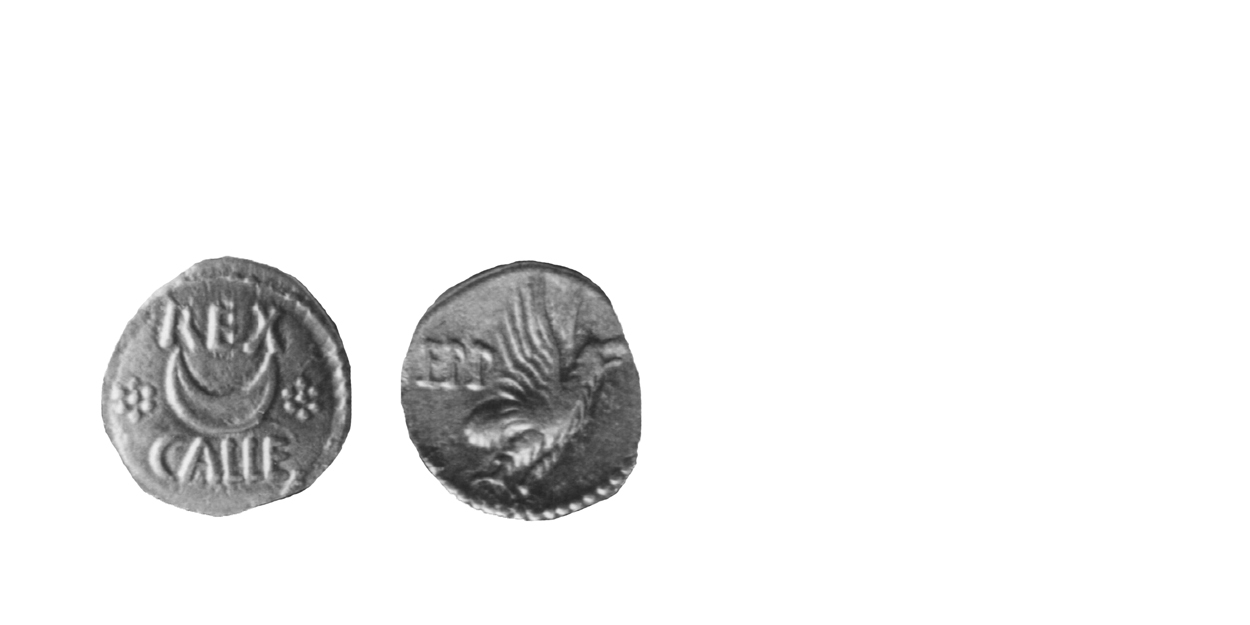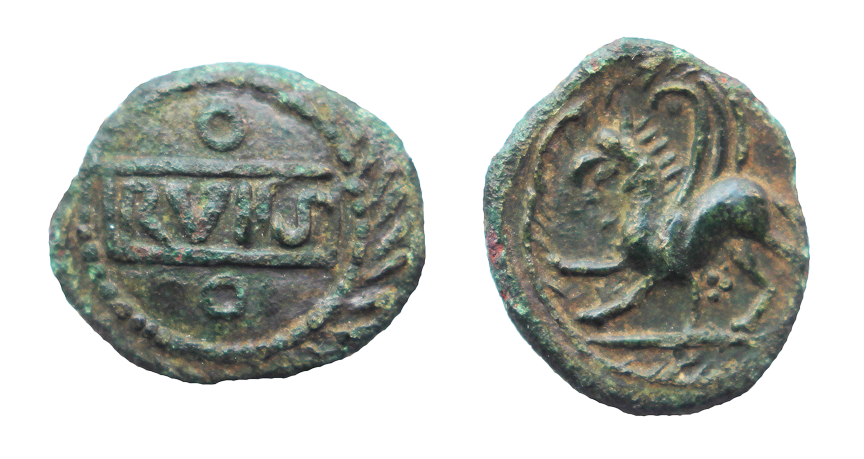
History
The "Interregnum" (Info)
The Trinovantian/Catuvellaunian "Interregnum" 10 B.C. – 10 A.D.
The term "Interregnum" is arbitrarily given to to the period between the coinages of Tasciovanus and Cunobeline. A ten to twenty year time gap has traditionally been identified between the two reigns. No explanation of the events of this period has been universally accepted, and the entire subject remains one of controversy.
Trinovantes/Catuvellauni
The period started with new inscriptions, SEGO and DIAS, added to Tasciovanus' name on the Trinovantian/Catuvellaunian coinage. As this occurred, the stater's weight was reduced from 5.60 to 5.40 grammes. About this time, a new coinage appeared with the inscription ANDOCO (generally accepted as a name). The ANDOCO staters were struck to the new lighter weight and one ANDOCO coin also had the inscription TAS. As a final complication, new coins appeared with the inscription RVIIS. Allen noted the RVIIS coins were very close in style to those of Tasciovanus (139).
Allen suggested that all these new coins filled the gap before the coinage of Cunobeline (140). In 1989, a tentative chronological order for the inscriptions was suggested using the observation that gold coins and then silver ones went out of circulation (141).
Since 1989, there have been many efforts to refine our understanding (73). The inscriptions SEGO, ANDOCO, DIAS and RVIIS have been variously suggested as personal names, epithets, titles and mint-sites. The dating and typology of the coins has also been studied. Yet to date, no single hypothesis explaining the events of the time gap has been accepted by everyone.
Allen's 1944 suggestion – to list the coins inscribed SEGO, ANDOCO, DIAS and RVIIS to a twenty year gap between Tasciovanus and Cunobeline – still remains our best explanation. Given the intense scrutiny devoted to these coins over the last 25 years, there may not be a better one. Should one emerge in the future, it will become necessary to revise our interpretation of this period.
The coins closest in style to those of Tasciovanus are those inscribed SEGO, struck in gold, silver and copper. Next, probably appeared the coins with the name ANDOCO. Andoco's staters were copied from the earliest type staters of Tasciovanus, but were struck to the lighter weight-standard of the Interregnum. Allen noted the die cutter who engraved the dies was either copying from a poorly-preserved coin or was unfamiliar with the details of the design because he blundered the bucranium above the horse (142). The coins inscribed DIAS, in silver and bronze, and finally RVIIS, only in bronze, followed.
Cantii
In Cantian territory, the coinage of Dubnovellaunus-in-Kent ceased, replaced by that of a short-lived ruler Vosenos. Soon Vosenos disappeared, and coins of an Atrebatic/Regnan/Belgic ruler, Eppillus, circulated in fairly large quantities. The Eppillus pieces carried new designs, one with a winged victory; interestingly none of these carried the Calleva mint signature.
Speculatively, some turmoil in Trinovantian/Catuvellaunian territory may have given the Cantii an opportunity to change their ruler. The Atrebates/Regni/Belgae may have then seized the opportunity to exert their influence in Kent, while the Trinovantes/Catuvellauni were preoccupied with internal problems.
Iceni
The Iceni began to strike silver coins with the inscription ANTED, and even issued a small number of gold staters with this inscription. Although the gold staters were short-lived, the inscribed silver issues endured. Evidently the Iceni gained increased independence from Trinovantian/Catuvellaunian influence, or at least received some concession during the time of trouble.
Atrebates/Regni/Belgae
In Atrebatic/Regnan/Belgic territory, Tincommius disappeared, replaced by a new ruler named Eppillus, who styled himself "REX" (king). Both Tincommius and Dubnovellaunus (probably the Kentish one) appeared in Rome about this time appealing to Augustus for aid.
By 10 A.D., the troubled period had passed and Cunobeline held the Trinovantian/Catuvellaunian throne. The coinages with the inscriptions ANDOCO, SEGO, DIAS and RVIIS ended abruptly and the Atrebatic/Regnan/Belgic coins disappeared from Kent. The Cantian coinage had come to an end with Vosenos, never to be reinstated and the coins of Cunobeline became the normal coinage of Kent from this time on. Cunobeline evidently drove the Atrebates/Regni/Belgae from Cantian territory after consolidating his rule. The Atrebates/Regni/Belgae, as the historical record shows, were subsequently placed on the defensive by the Trinovantes/Catuvellauni until the situation became serious enough to provide an excuse for Roman intervention in 43 A.D.
Next Section – Later Coinages – Introduction

